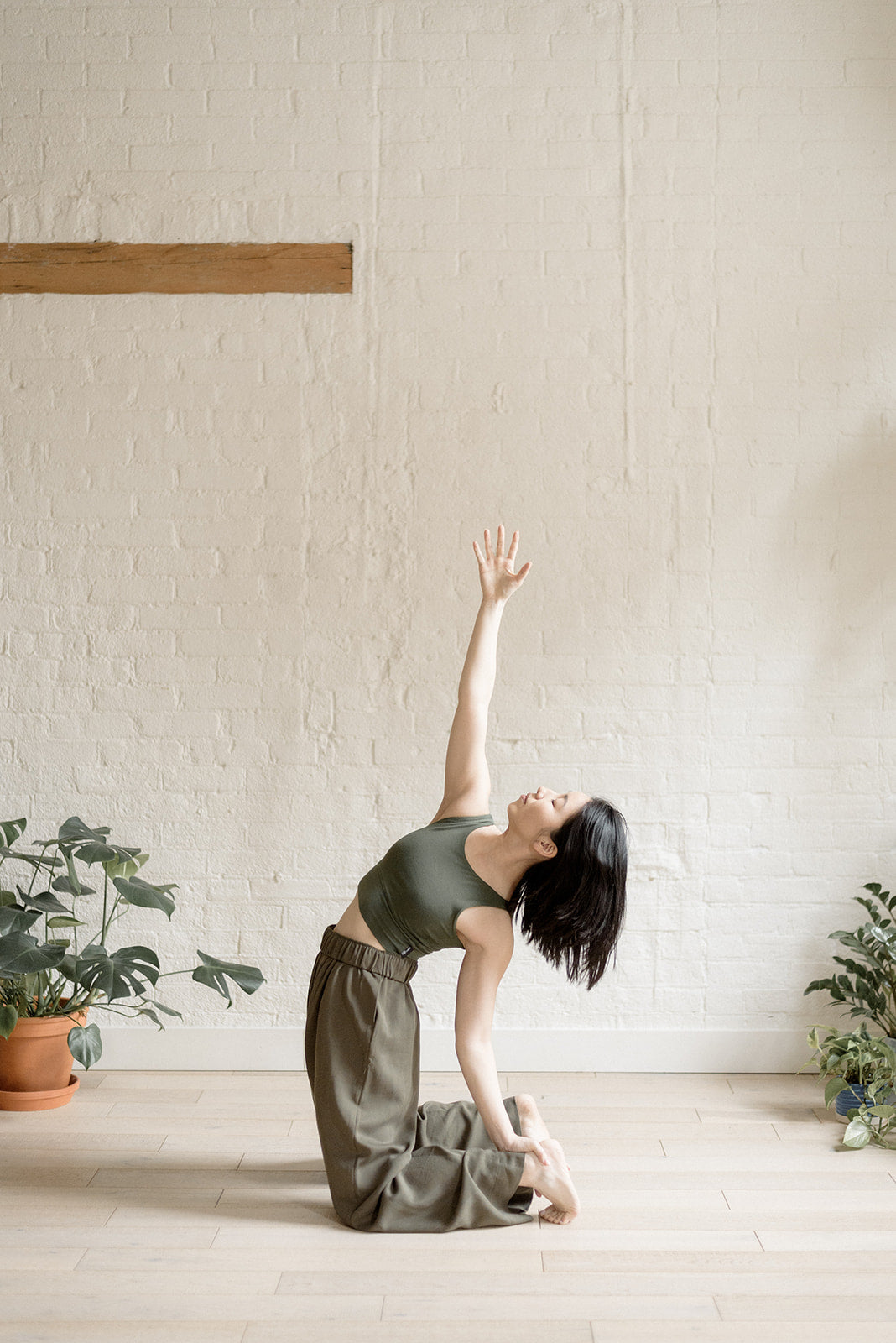
· By Mays Awad
Developing a home practice
Developing a home yoga practice can feel easy peasy with the right framework to help guide you into place. Taking your practice out of the studio and into your own space is bound to come with its challenges: motivation to arrive on the mat, motivation to stick with the duration of a practice, the distractions of home life - the list goes on. But working through these obstacles will make the benefits so much sweeter on the other side. This is an opportunity to transform your practice into something really special - something that encourages you to dig deep and uncover bits and pieces of yourself you haven’t already met.
Stepping into this stage of your yoga practice is something to celebrate! It signifies trust in yourself and a growing willingness to be vulnerable. That first self-class likely won’t be the best class you’ve ever had, but that’s okay! After enough time and tries, you might just become your own favourite teacher :)
Why start a home yoga practice?
There are so many reasons to start a home practice! Whether it's not having access to your fav studio or looking for something short + sweet to shake up your day, by practicing at home, you:
• Might notice that with the extra time spent on the mat, shifts + changes start to happen to your body and your postures
• Improve your body awareness by moving to the beat of your own drum instead of following instructions
• Develop a better intuitive understanding of the difference between a discomfort signal and a pain signal
• Have control over the extra practice fluff (think: timing, duration, music, lighting)
Don't worry about doing it "right"
A common stressor around practicing yoga at home without a teacher is whether or not you’re practicing “right”. By moving on your mat at home, your body can become your teacher. In this sense, there is no right or wrong, because you are a unique human that is being guided by the unique needs of your body! Don’t worry about your alignment being perfect or what the pose looks like and direct your attention instead to what everything is feeling like. So what if you end up moving in a way that isn’t yoga? This is about developing your relationship with you and being guided by the inner wisdom inside (or meeting that inner wisdom for the first time!)
Developing your confidence with a sequence
Until you feel comfortable enough moving freely between shapes on your mat, having an idea of what you might do can really help to ease your mind and give your practice a purpose. Yoga teachers themselves spend hours and hours over years of training to nail the art of sequencing, proving that even the most experienced yogis are truly forever students. But there are some foundational ideas that you can use to build a simple sequence that will support you when you’re alone on your mat. Try writing it out on a piece of paper and having it with you while you move.
1. Set your intention
Start your practice in any comfortable seat, settle your hands somewhere, and softly close your eyes. Take a few, slow, deep breaths in and out through your nose as you start to consider what your intention for your practice is.
An intention is a statement:
• About you
• Positive
• Spoken in the present tense
Try starting your intention with words like "I am” or "I welcome". Reword an intention that starts with “I want”, and change it to a statement that recognizes that you already are or have that which you seek. If it feels icky to say or doesn’t seem authentic, change it up! It might not happen right away, but in time, the heart will get louder.
If an intention isn’t coming up just yet, try one of these:
I am strong + soft, expanded and grounded, becoming and already here // The earth is bountiful and provides me with everything that I need // I am moving mindfully + with love
2. Warm-up
The first few shapes you take in your practice help to prepare your muscles for movement and encourage your mind to settle and “arrive”. It’s important to start slowly enough to check-in and notice what’s going on in your body.
Try:
• Cross-Legged Twist
• Cat + Cow
• Upward Facing Dog into Child’s Pose
• Seated Forward Fold
• Core Activation
3. Sun Salutations
Sun Salutations can 100% be practiced on their own and are an easy way to start a solo movement practice as the poses are already laid out for you. A solo exploration of Sun A + Sun B also gives you the chance to go through them at whatever speed you want — a great opportunity to familiarize yourself with the individual poses within them. Try them after your warm-up for as many rounds as you’d like.

4. Standing + balancing poses
Activate the biggest muscles in your body with some standing + balancing poses. You can practice these on their own without transitions, or slip a vinyasa between them. To start off, consider choosing four poses and moving through them. Here’s an example: Warrior 1 > Warrior 2 > Triangle > Half Moon.
5. Backbends
These bad boys are super invigorating and are often seen as the “height” of practice. Start will belly-down backbends like locust to warm you up for something a little more demanding (if you’re headed there), like wheel.
6. Twists
Imagine wringing out your belly like a wet towel with some twists, take one or two in a seated shape or laying down.
7. Forward folds
Forward folds have a calming effect on your nervous system and transition you out of your fiery, standing + balancing bit. Add as many as you’d like and hold for at least 5 breaths.
8. Inversion
If you’re working with an inversion, before Savasana is the time to get it going. Not ready to go upside down? No problem. Lay on your back and extend your legs + arms to the sky and give your wrists + ankles a good shake with some juicy mouth exhales.
9. Final rest
While it can be hard to take a final rest when you’re practicing at home, it’s just as important as every other part of the practice. Settle in for a Savasana or take a seat for meditation. Imagine absorbing the efforts of your practice, giving your body a chance to soak it all in.
For some extra inspo and motivation to practice, you can always try flowing alone, together. Ask a friend to share some space with you and move on your own, but in the company of someone you care about. All of this is adaptable, and that’s the point! Don’t be afraid to ask your teacher for specific tips and tricks and try out any flows that they have posted online. Make it what you will and keep working at creating a practice that feels like home. It’s coming.
